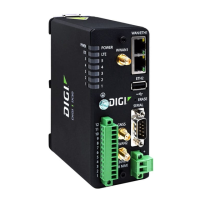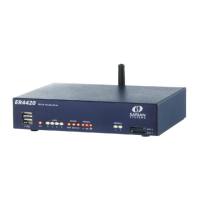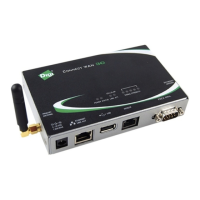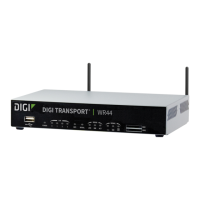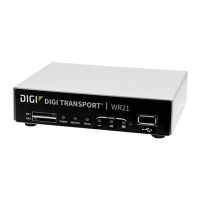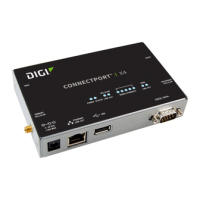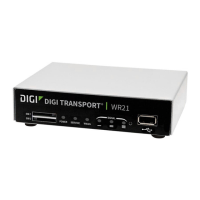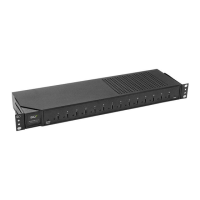Routing Dynamic DNS
IX14 User Guide
725
127.0.0.0/8 127.0.0.1
/network/device/loopback
169.254.0.0/16 169.254.100.100
/network/device/lan
192.168.210.0/24 192.168.210.1 10
/network/device/lan
fd00:2303::/64 1024
fd00:2303::/48 2147483647
fe80::/64 256
IPv4 Route Load Balance (%)
---------- ----------------
lan 100.0
No IPv6 default load balanced routes found
>
You can limit the display to only IPv4 entries by using show route ipv4, or to IPv6 entries by
using show route ipv6. You can also display more information by adding the verbose option
to the show route and show route ip_type commands.
3. Type exit to exit the Admin CLI.
Depending on your device configuration, you may be presented with an Access selection
menu. Type quit to disconnect from the device.
Dynamic DNS
The Domain Name System (DNS) uses name servers to provide a mapping between computer-
readable IP addresses and human-readable hostnames. This allows users to access websites and
personal networks with easy-to-remember URLs. Unfortunately, IP addresses change frequently,
invalidating these mappings when they do. Dynamic DNS has become the standard method of
addressing this problem, allowing devices to update name servers with their new IP addresses.
By providing the IX14 device with the domain name and credentials obtained from a dynamic DNS
provider, the router can automatically update the remote nameserver whenever your WAN or public
IP address changes.
Your IX14 device supports a number of Dynamic DNS providers as well as the ability to provide a
custom provider that is not included on the list of providers.
Configure dynamic DNS
This section describes how to cofigure dynamic DNS on a IX14 device.
Required configuration items
n
Add a new Dynamic DNS service.
n
The interface that has its IP address registered with the Dynamic DNS provider.
n
The name of a Dynamic DNS provider.
n
The domain name that is linked to the interface's IP address.
n
The username and password to authenticate with the Dynamic DNS provider.

